Synopsys is consolidating the company positioning on Verification IP. We have announced the launch of Discovery VIP in Semiwiki, in February this year, and we have commented about the acquisition of nSys and ExpertIO in January. This webinar, “Achieving Rapid Verification Convergence of ARM® AMBA® 4 ACE™ Designs using Discovery™… Read More
 Think Quantum Computing is Hype? Mastercard Begs to DisagreeJust got an opportunity to write a blog…Read More
Think Quantum Computing is Hype? Mastercard Begs to DisagreeJust got an opportunity to write a blog…Read More TSMC Kumamoto: Pioneering Japan's Semiconductor RevivalIn the lush landscapes of Kumamoto Prefecture, on…Read More
TSMC Kumamoto: Pioneering Japan's Semiconductor RevivalIn the lush landscapes of Kumamoto Prefecture, on…Read More Memory Matters: The State of Embedded NVM (eNVM) 2025Make a difference and take this short survey.…Read More
Memory Matters: The State of Embedded NVM (eNVM) 2025Make a difference and take this short survey.…Read More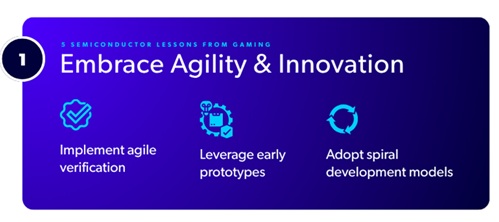 5 Lessons the Semiconductor Industry Can Learn from GamingBy Kamal Khan The semiconductor world has always…Read More
5 Lessons the Semiconductor Industry Can Learn from GamingBy Kamal Khan The semiconductor world has always…Read MoreTSMC 20nm Challenges!
Now that the 28nm challenges are dead
It is time to look ahead
The tabloid pundits may not agree
But Moore’s law again you will see
The semiconductor ecosystem is humming
(2X gate density -20%+ performance-20%+ power savings)
The 20nm design starts are coming!
Okay, I’m really bad at poetry. Gambling however, I do pretty well. Las… Read More
Formal Verification, there’s an App for that
The success of Apple’s AppStore has made people aware that software doesn’t have to be delivered in a big monolithic lump. Indeed, going back a bit earlier, Apple’s iTunes store made people aware that you didn’t have to buy a whole album if you only wanted a track or two.
EDA applications in today’s… Read More
Where to eat lunch or get a beer at DAC
You are going to DAC. And you don’t want to eat a Moscone Center rubber chicken Caesar salad for lunch. But you lack local knowledge. So here are some places within a 10 minute walk. These are just places I like. Nobody is paying me to recommend them.
Places to eat
The food court in the San Francisco Center on Market Street between… Read More
GlobalFoundries 2012 Update!
What’s new with Glofo? Quite a bit actually. It was interesting to see a Made in America: Global Companies Expand in U.S. Towns segment on semiconductors! Give it a look, I enjoyed it. It’s an election year, jobs are key to any election, so it did not surprise me to see President Obama making the rounds:… Read More
It is free after you pay for it and there is a one-time annual fee: The Case for FD-SOI
In one of Portlandia’s TV program sketches, there is a funny interchange between a carrier salesperson and Fred Armisen (of SNL fame) who was trying to buy a phone. One chuckle line was a statement by the seller that the phone was free after paying for it and that there was a one-time annual fee. With this anecdote as a mental backdrop,… Read More
28nm Layout Needs Signoff Quality at Design Time
We are all aware that at 28nm and below several types of complex layout effects manifest themselves into the design and pose a herculean task, with several re-spins to correct them at pre-tapeout. It’s apparent that the layout needs to be correct by construction at the very beginning during the design stage.
20nm IC Design at IBM using Cadence Tools
Collaboration between EDA, Foundry and Design was the key idea today in a webinar hosted by IBM and Cadence about 20nm custom IC design. The three presenters were:
John Stabenow, Cadence
Jeremiah Cessna, Cadence
Keith Barkley, IBM… Read More
The Biggest EDA Company You’ve Never Heard Of
There’s this EDA company. They have over 100 tapeouts. They have a $28M in funding. They have 250 people. And you’ve never heard of them. Or at least I hadn’t.
They are ICScape. They started in 2005 with an investment from Acorn Campus Ventures and delivered their first product, ClockExplorer, in 2007 and their… Read More
Use a SpyGlass to Look for Faults
There is a famous quote (probably attributed to Mark Twain who gets them all by default) “When looking for faults use a mirror not a spyglass.” Of course if you have RTL of your IP or your design then using a SpyGlass is clearly the better way to go. But it is getting even better since there is a new enhanced release, SpyGlass… Read More



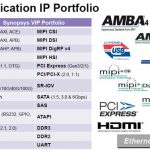
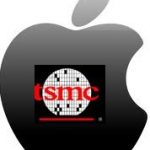
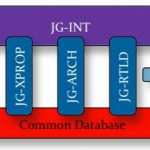


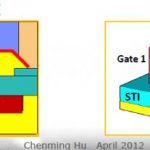
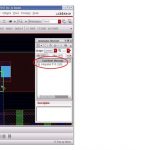

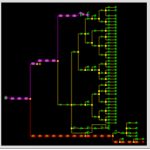
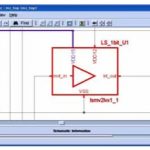
EDA Has a Value Capture Problem — An Outsider’s View